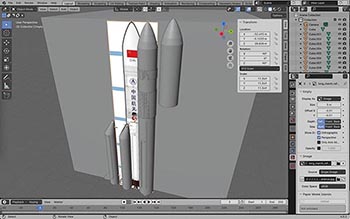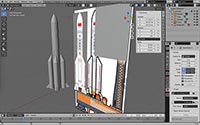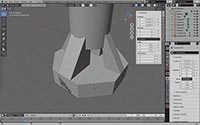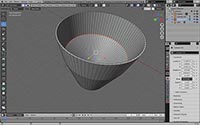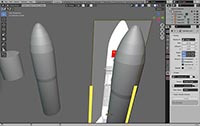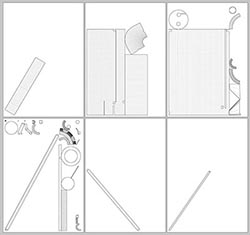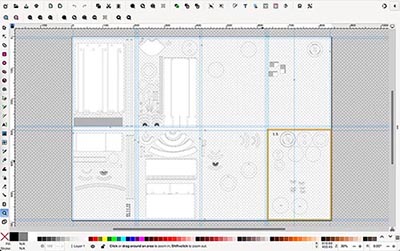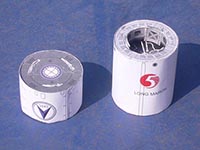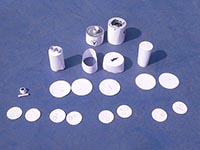 |
||||||
|
||||||
|
||||||||||||||||||||||||
About designing the Long March 5 |
||||||||||||||||||||||||
|
||||||||||||||||||||||||
I wanted to create a Long March rocket for a very long time, having first thought of it when Yang Liwei became the first Taikonaut. However back in the day, I was not able to find any good references online and was not so committed to finding any. Interestingly enough, that was long before the Long March 5 as such came into existence. Over the years other projects took precedence and while I never forgot about a Long March 5 model. |
||||||||||||||||||||||||
After returning to China on 2020, I actually reconsidered it, and when I started to get into 3D-software, I understood that now it may be much easier to do a Long March rocket. In 2023 I got bored of several other projects and looked another time for good reference material and found a lot of material on the Long March 5. Trying to figure out a good size for the model, I settle for 1:100 as I had identified this as a scale in which other rocket models (although plastic) are available and that is also a good size for me to maybe to some airliners in the future and it’s always nice to have models in matching scales. |
||||||||||||||||||||||||
|
Setting up the model in Blender was fairly easy, and I had quickly done the 3D-model. Also this required no texture paint or any other sophisticated stuff. After the rocket itself was done, I considered doing the launchpad as well. I did find some material that would have been enough to do a simplified launchpad. But then I changed my mind for two reasons. Firstly. This launchpad would have been huge in 1:100, with the main platform not even fitting on an A3-page and more importantly, if I created the launch pad, then the launchpad would become the much more difficult, sophisticated and impressive model. But I wanted to design a rocket and not a launchpad. So I came up with a stand for the rocket, which was very loosely inspired by the launch pad. |
||||||||||||||||||||||||
|
||||||||||||||||||||||||
Test building of the model was largely limited to testing the rocket engines and the diameters for the formers to be rolled into the main body. For the rocket engines , a version where I had set up a thickness in Blender worked well and I re-adjusted the various engines based on that. For the formers I tried many different sizes. Two versions worked well, I decided for the slightly tighter one to make it better for downscaling than upscaling. Another challenge was the docking ring, as I wanted the version with two stages to be dockable and separable. Her the time of development I considered again and again how to do it. My first attempt at making tabs that widen, similar to those used on packaging failed, after which I came up with the final rotating docking clamps. |
||||||||||||||||||||||||
|
||||||||||||||||||||||||
|
||||||||||||||||||||||||
While the top of the lower stage tanks is based on how it actually looks, the docking ring is actually largely based on imagination trying to come up with something that looks plausible. I could not find reference of the insides of the rocket engines, so I based them on image of the Saturn V’s rocket engines. The widening head of the upper stage was the last major change on the 3D-model. When I first created the 3D I hadn’t thought of doing it, I thought it was too insignificant to use extra-parts, but after looking at pictures again and again and coming across another Long March 5 model (probably plastic), I thought better do it rather than regret later not having it. |
||||||||||||||||||||||||
The model was basically finished before I moved in February 2024. After I had arrived in the new home I added the numbers and parts and put together the instructions. For this I came up with a new style, as after the death of my old computer I was no longer able to use the original font. So I redesigned the instructions and page typography. The model was released in time for the 15th birthday of Stahlhart papercraft’s website on March 17th, 2024, but the model art the time was never completely built. During the next weeks, I built it for the first time. Of course the docking ring was initially wrong and needed to be mirrored. The stand was also wrong, and lines were missing on the pylons to connect the booster rockets. These were fixed and the updated version published. Standing on my desk, the model is actually the most imposing Stahlhart Model so far. While the Drum Tower had more pages and parts, it is much smaller. While the model isn’t one of the most fun builds, as it has a lot of repetitive parts, such as having to build the booster rocket four times, it is well worth the effort. I especially think that the somewhat annoying details such as the strokes and thrusters are worth it, as they make the model believable and pay off having it at a big size. The Long March 5 was a first one in many ways: First model of the new Others category, first to use the new standard font, first to have instructions made with Affinity Publisher and first one edited in Inkscape, which I decided to learn in order to teach it for my papercraft design courses. |
||||||||||||||||||||||||
| return to top | ||||||||||||||||||||||||
